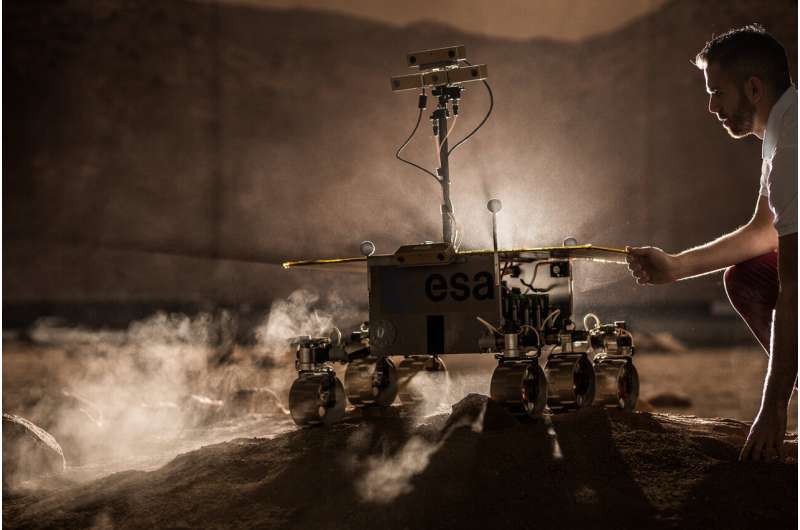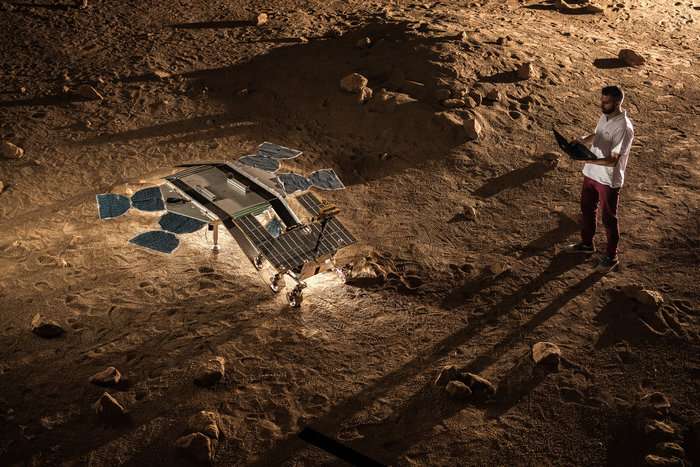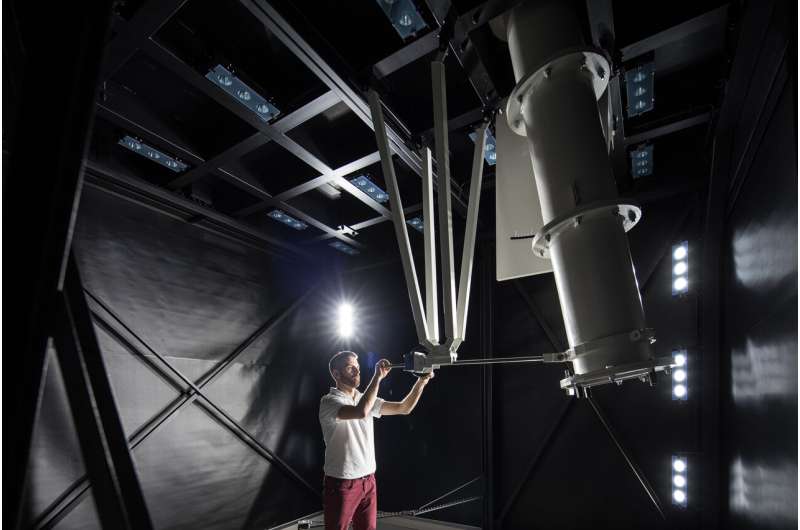A European mission control for the Mars rover

The ExoMars rover has a brand new control center in one of Europe's largest Mars yards. The Rover Operations Control Centre (ROCC) was inaugurated today in Turin, Italy, ahead of the rover's exploration adventure on the Red Planet in 2021.
The control center will be the operational hub that orchestrates the roaming of the European-built laboratory on wheels, named after Rosalind Franklin, upon arrival to the Martian surface on Kazachok, the Russian surface platform.
"This is the crucial place on Earth from where we will listen to the rover's instruments, see what she sees and send commands to direct the search for evidence of life on and under the surface," said Jan Wörner, ESA's Director General.
The ExoMars rover will be the first of its kind to both move across the Mars surface and to study it at depth with a drill able to collect samples from down to two meters into the surface.
The epicenter of the action for directing Mars surface operations on Earth is at the ALTEC premises in Turin, Italy. From here, engineers and scientists will work shoulder to shoulder at mission control, right next to a very special Mars yard.
Filled with 140 tonnes of soil, the Mars-like terrain has sandy areas and rocks of various sizes that will help rehearse possible mission scenarios.
In case Rosalind Franklin lands on a small hill or needs to overcome a dune, the Mars yard has a 64-square metre tilting platform able to simulate up to 30 degrees of inclination and help decide on the best way to move on.
When it comes to drilling, the new center has a unique feature—a platform with a well that will allow the rover operators to exercise the full sequence of collecting Martian samples two meters under the surface.
The facility has special lamps to simulate the light conditions on Mars, different from those on Earth.
"Thanks to ROCC, Europe will have the great opportunity to manage the activities of the rover on Mars and to plan and test its movements," said Giorgio Saccoccia, president of the Italian space Agency ASI during the opening ceremony.
"This will be the first step towards new robotic missions for the study of Mars and other celestial bodies."
ROCC and roll
Using roving models, the ExoMars teams will test every command and get ready for the unexpected.
"Besides training and operations, this fit-for-purpose center is ideal for trouble shooting," points out Luc Joudrier, the ExoMars rover operations manager who has been studying how a rover moves on Mars for 15 years.

The enormous distance from Earth to Mars means that a signal can take between 4 and 24 minutes to reach the control center, making direct control of ExoMars impractical. Rosalind Franklin will be able to take some of its own decisions.
"With the Mars yard next to mission control, operators can gain experience working with autonomous navigation and see the whole picture," adds Luc.
The inauguration of ROCC is followed by plenty of action. The ExoMars science working team will gather next week to get familiar with the place, run demos with a mock-up and plan operations for each of the science instruments in different scenarios.
The facilities will be buzzing with activity from July 2020, when a Proton rocket will insert the ExoMars spacecraft in an eight-month long interplanetary cruise, marking the beginning of an ambitious, scientific and robotic exploration mission.
The ExoMars Trace Gas Orbiter, which has been circling Mars since 2016, is already getting ready for that moment and will adjust its orbit to support the entry, descent and landing of the spacecraft. The targeted landing site is Oxia Planum, a region that preserves a rich record of geological history from the planet's wetter past.
Martian gear
On Earth, teams all across Europe are making progress towards the launch date next year.

"This is team work with industry and partners at its best," said David Parker, ESA's Director of Human and Robotic Exploration, also present during the inauguration ceremony.
"It is exciting to witness how the pieces of the Martian spacecraft are coming together, and I would like to recognize the hard work of the teams running testing and integration campaigns around the clock," he added.
While a test model of the rover is wheel walking on simulated sandy dunes in a special tilting platform in Switzerland, the panoramic camera will be soon built into the rover and give it her eyes.
The drill and a key set of scientific instruments—the Analytical Laboratory Drawer—has been declared fit for Mars and has now been integrated into Rosalind Franklin rover at Airbus Stevenage in the United Kingdom.
Over the summer the rover will move to Toulouse, France, where it will be tested in Mars-like conditions. At the end of the year Rosalind Franklin will travel to Cannes to meet the landing and carrier modules for final assembly.
Provided by European Space Agency



















